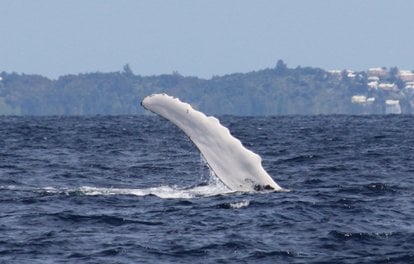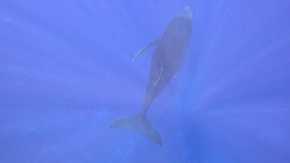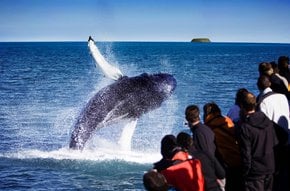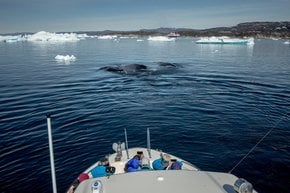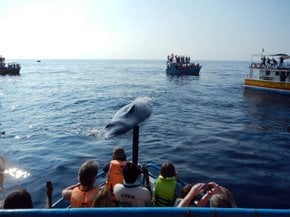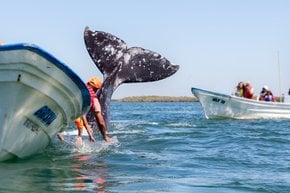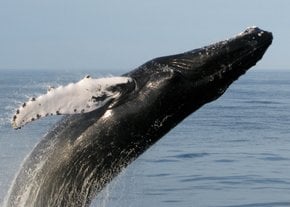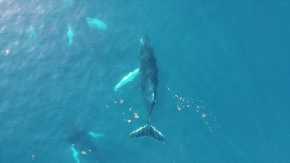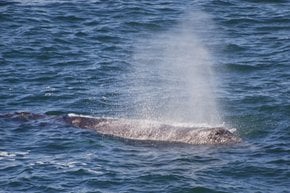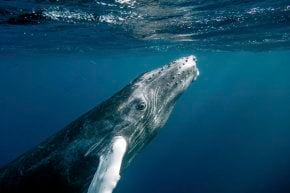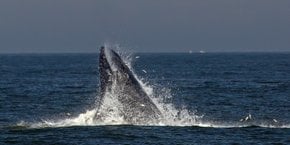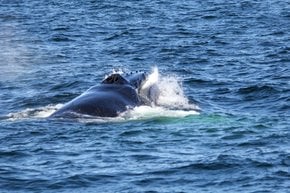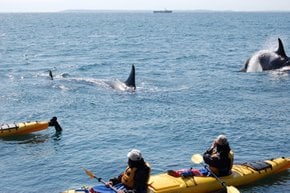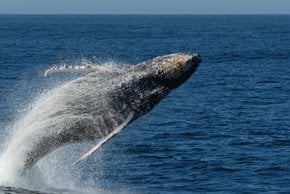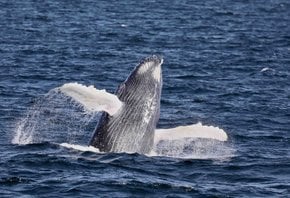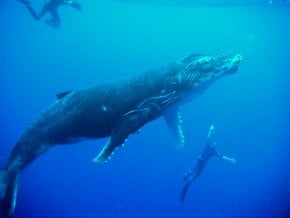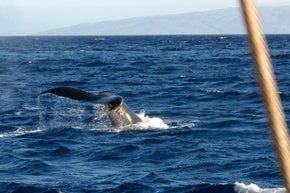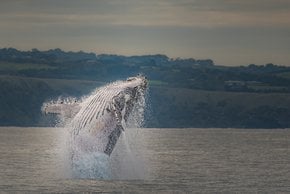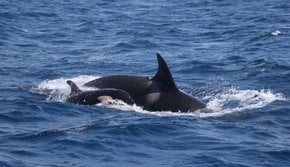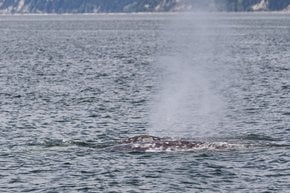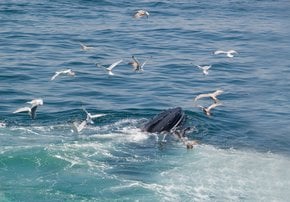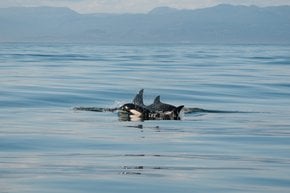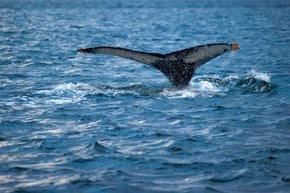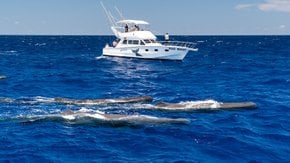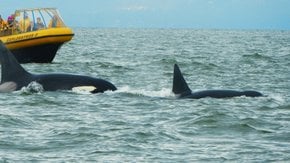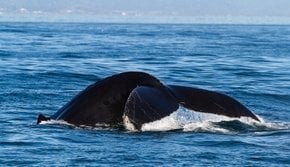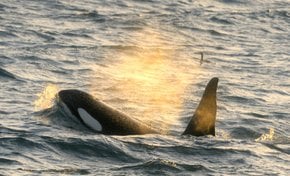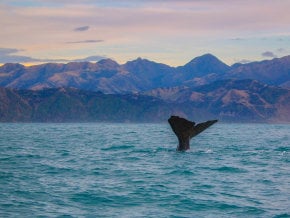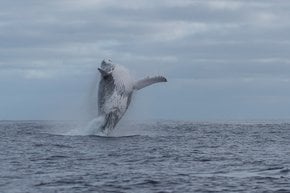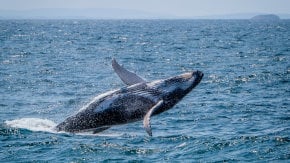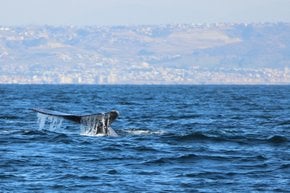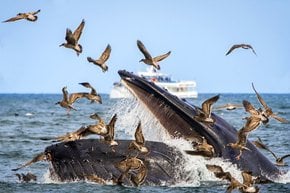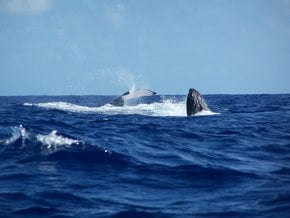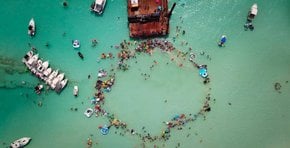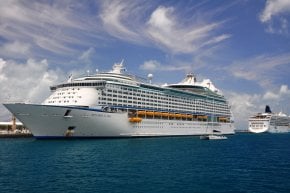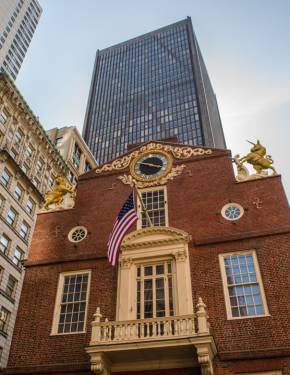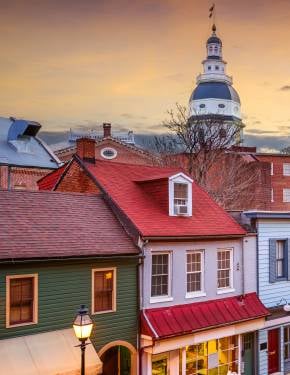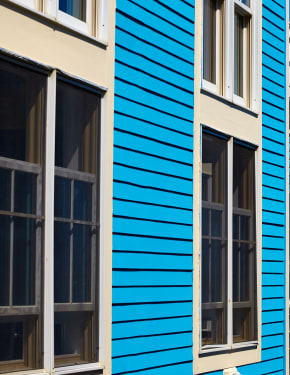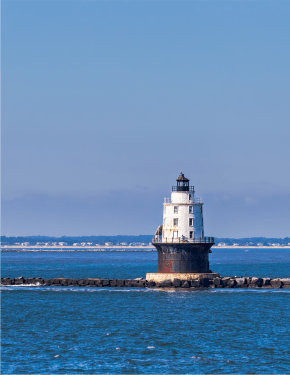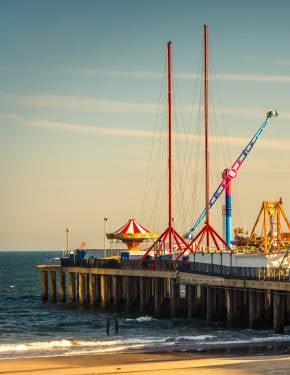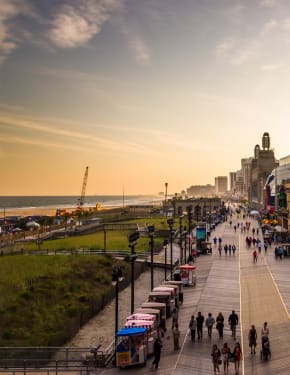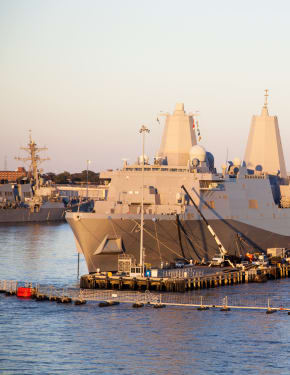Whale Watching in Bermuda 2026
Observe majestic whales from the shore or from a boat in Bermuda
Best time: March–April
Every spring, about 15,000 humpback whales make a stop in Bermuda waters as they migrate north from the mating grounds in the Caribbean to their feeding grounds in Greenland, Canada, and Iceland. These giant marine creatures, which weigh about 40 tons, often breach the waters, showing off acrobatic displays—a spectacular sight for locals and visitors to observe from a distance. Pilot whales, sperm whales, and endangered blue whales are also seen in the ocean, although they are less common. Humpbacks, on the contrary, are quite predictable and have particular behavior and migration patterns.
Best Places for Whale Sightings
On a clear day from March to April, it is possible to see humpback whales in the waters near South Shore. A pair of binoculars can help to see these gentle giants more distinctly. West Whale Bay Park is an excellent location to spot whales from the shore. Overlooking the Atlantic Ocean from the southwest coast, the park is famous for sunset photographs and seasonal whale spotting. It features picnic tables, lawns, and the 18th-century Whale Bay Fort and Battery.
Whales can also be spotted in other places around the island. Besides West Whale Bay Park and Dockyard, sightings often occur around Somerset Bridge in Hog Bay, off Hamilton and St. George's.
Sally Tuckers and Challenger Bank are the best areas to see whales from boats. Located up to 15 miles (24 km) offshore, these locations offer solid chances to encounter whales in their natural environment.
Whale Watching Tours
Whale-watching tours depart regularly out of Dockyard and Flatts. There are several operators and boat types available. Some even feature a glass bottom, making the experience even more memorable. Tours generally last for five to six hours along the south shore. Tickets cost about $85-$120 for an adult and vary around $80 for children.
Some of the most popular operators include Island Tour Centre, running 45-feet (13-m) motor boats and 60-feet (18-m) catamarans. Whale-watching tours are scheduled from early or mid-March through late April and span approximately 5 hours. All the vessels depart from the Dockyard. Tickets cost $100-125 for adults and $80 for children over five years old. Unfortunately, children under five are not permitted to attend the tour. Check-in takes place at the Island Tour Centre.
Bermuda Underwater Exploration Institute operates tours from mid-March through late April on Wednesdays, Saturdays, and Sundays. The tour lasts from 9:15 am to 4-4:30 pm. It's recommended to bring food and beverages with you. Tickets cost $85 for members of the institute and $100 for non-members. Because the trip is quite long, children under 12 years old are not allowed to take the tour.
Bermuda Aquarium, Museum & Zoo promises an unforgettable experience on the open ocean with whale encounters from early March through late April. The tours last 6 hours, from 11 am to 5 pm, on selected dates during the tour season. Boats depart from Flatts Dock, situated opposite the Bermuda Aquarium. Non-member tickets cost $100 for adults and $80 for children under 12 years old.
Whale Watching Season
Whales can appear in Bermuda waters as early as December or January. However, organized whale watching doesn't start before spring. March and April are the best months to see humpback and sperm whale migration at its peak. Sometimes, it's also possible to spot mother whales with their calves. In the spring, water clarity is amazing in Bermuda, which makes spotting whales a lot easier.
Humpback Whales
Humpbacks are spotted during Bermuda whale-watching tours the most often. They seem to like attention and often swim along with a boat, demonstrating breaching, tail, and flipper slapping. Humpbacks communicate with each other through melodious calls that can be called "songs." These "songs" last up to 20 minutes. Calves often "whisper" to their mothers. Being up to 55 feet (16 m) in length, humpbacks have flukes unique to each individual.
Sperm Whales
Sperm whales are occasionally spotted in Bermuda. They are not as common as humpbacks. They prefer deeper cooler waters and usually keep far from shore. The largest of the toothed whales, sperm whales can reach 60 feet (15 18 m) and weigh over 45 tons. They can be identified due to a massive square head which takes about a third of their body length.
Pilot Whales
Pilot whales are also occasionally spotted in Bermuda. As one of the largest oceanic dolphins, a pilot whale is extremely social. They are often seen in large pods and are known for their intelligence. Pilot whales whistle to communicate with each other. They usually feed on squid, octopus, herring, and small fish. These whales are significantly smaller than others in their family and are about 21 feet (6.5 m) long.
Whale Watching Tips
Binoculars are essential for a great whale-watching experience. If you plan to take pictures, also think about using a telephoto lens for your camera or choose a camera with a good zoom. Due to great water clarity and visibility of over 100 feet (30 m) below the surface in Bermuda, the chances to spot whales through a glass bottom are also high. Generally, most whale-watching tours are successful in Bermuda.
What to Bring
Some tours include food and beverages, while others offer only the essentials, so it's best to inquire what's included in advance. Alcohol is usually not served or sold on the boats. If you have motion sickness, make sure to take medicine before departure. It's also advised to bring sunscreen and sunglasses. If you're planning on taking your children, consider bringing a game or a color book to occupy them during the trip's downtime.
What to Wear
Even on a hot day, make sure to bring some extra clothes on a boat. Temperatures drop significantly once you're out in the ocean. A jacket or a sweater might come in handy. It's recommended to bring shoes with rubber soles and closed toes. Visitors are discouraged from wearing flip-flops or high-heels as these types of shoes don't provide much stability on a moving vessel. A sunhat is a good idea since the sun gets pretty intense around midday.
Where to Stay
Bermuda Island offers a mix of luxurious beachfront resorts, small and cozy boutique hotels, and down-to-earth guesthouses. No matter where you stay, you'll be just steps away from famous pink sand beaches and turquoise waters. The accommodation generally costs $513 for a night, with the cheaper options being $249.

